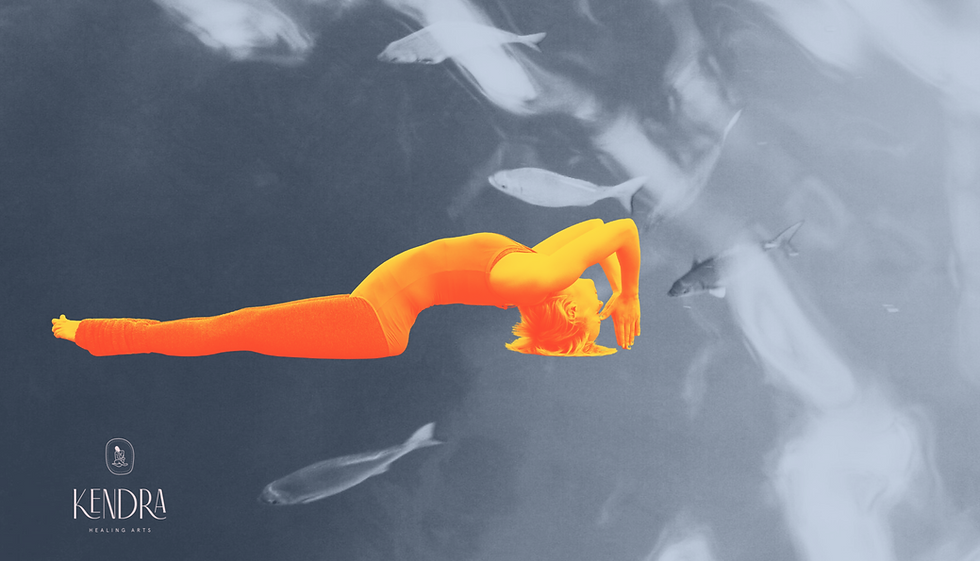Mindfulness. Only one breath away.
- Kendra Boone

- Feb 9, 2016
- 3 min read
Updated: Jan 16

Yoga has a lovely way of filtering itself into our life in a positive way. It’s the art of slowing down, simplifying, and paying more attention to the present moment.
My own light bulb moment came during an intense 10-day Vipassana meditation sitting. I realised that, beyond my neediness to achieve or relax, there was a place of ease within myself, where I could let life unfold of its own accord.
The practice of mindfulness was all I needed to get clarity, insights and keep away from any level of anxiety that I was creating for myself. To stop the searching and thinking always into the future, and simply begin where I was. It seems strange to hear this because it assumes we are all on some form of ego-driven autopilot, but with practice, meditation and yoga taught me to uncoil from my various conditioned behaviours and thought patterns.
Beth, who practices Mindfulness Yoga, shares her mindful moment to live with purpose.
I want you to know that some of your simplest instructions, passed on at the mindfulness yoga class that I share with you, do have positive ramifications for me in my everyday life.
Recently, I was frustrated to find myself standing in a queue, listening to counter staff explaining that 'the computers are down, the systems have failed'. I had made the trip especially, so coming back at some other time was not an option.
Precious time was ticking by. My mind turned to Tadasana. I slowed down my breathing, centred my feet and relaxed my shoulders. I lifted my head and softened my jaw. As my posture straightened, my stress level lowered. The ache in my shoulders eased. I concentrated on my breath.
Eventually, the systems did come back up again. I was smiling as I approached the counter. I was calm.
As I left that office, I decided to concentrate on maintaining my improved posture. I focused on stepping purposefully, slowly, kissing the earth with my feet. I held my head high and smiled. It is not so hard to be mindful and it does change everything.
Do you ever find yourself adding your own dramatic coating to stressful events? Why do we do this, when we know it only adds to our modern day adrenal overload?
According to Sonja Lyubomirsky, a psychology professor at the University of California:
50 per cent of happiness has a genetic component, 10 per cent depends on your life circumstances and, most significantly, 40 per cent is under your control.
Lyubomirsky stresses that developing strategies to harness that 40 per cent can make a significant difference in both your day-to-day life and in your long-term feeling of fulfilment and contentment.
Nice thought hey? So knowing that we are free to choose let’s get on with the practice.
Reducing anxiety and becoming whole again
Becoming mindful is a kind of remembering, and is synonymous with yoga’s meaning 'to yoke together’, or re-collect all the disparate parts of ourselves into an integrated whole. And when we remember, we pay attention to what is happening.
Buddha taught that we should cultivate meditative awareness during all activities of life: sitting, walking, lying down, standing. Well, the lying down seems the easiest to master, but don’t you find that as soon as you quieten down physically, you get to observe the mental chitter chatter that keeps reverberating through your head? Then how to progress from here?
5 tips to being more mindful
Practice recognising when certain activities alter your inner state or create a sensation in the body. Observe and give yourself permission to stop, feel and observe body and breath, as it is.
Set up an hourly alert that reminds you to stop and tune in to the present moment. Or even better, have a formal meditation sitting every day.
Join a Trauma Sensitive Yoga class to cultivate the art of self-enquiry and embody a wholesome practice that adds to the 40 per cent that’s under our control.
Reduce multitasking, and commit to a degree of simplicity. Use a few deep breaths to transition between your computer and your next activity.
Use difficult times to wake up into mindfulness rather than filling the void with more doing. Notice this as an opportunity to stop. For example, being a passenger, waiting for an appointment, or sitting to eat a meal.
Begin with a clear intention right now.
Mindfulness Yoga is modern yoga for busy people that helps keep our appointment with life. Perhaps it’s the balanced practice you’re after.
Make your 2025 a mindful one.
#mindfulnesscanberrasouth #mindfulness #mindfulnessyoga #yogaforanxiety #yogakingston #yogacanberra #yogacanberrasouthside #backpain #obesity #homeyoga #yoganidra #yogaforweightloss #helpsleeping #meditation #meditationcanberrasouth #anxiety #pratyahara #yogatherapy #restorativeyoga #therapeuticyogacanberra #canberrayogasouth #canberrayogasouth #depression #ahimsa #mindfulnessyogacanberra #hypertension #relaxationcanberra #traumasensitiveyoga




Comments